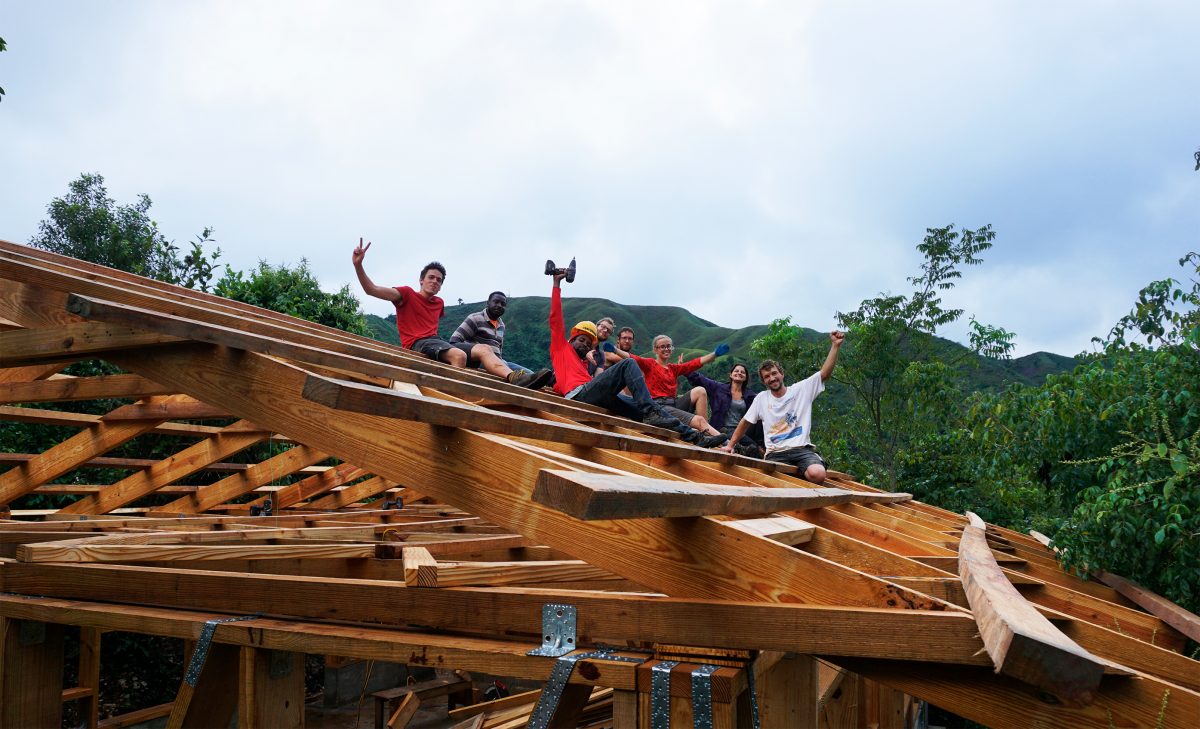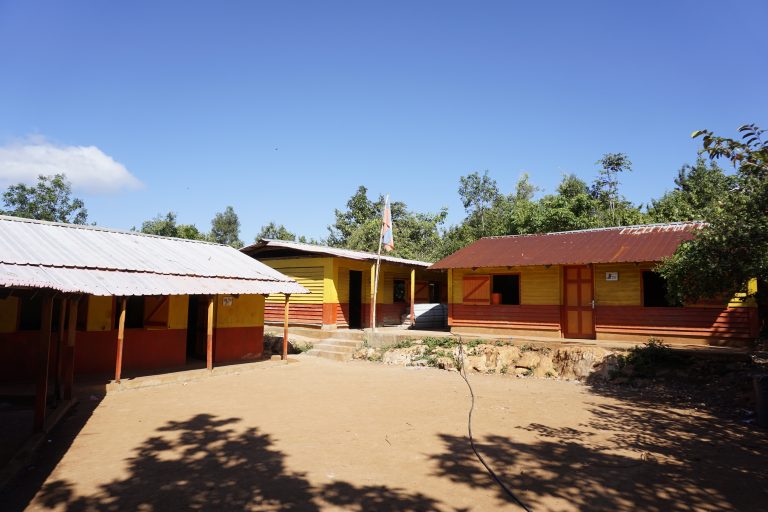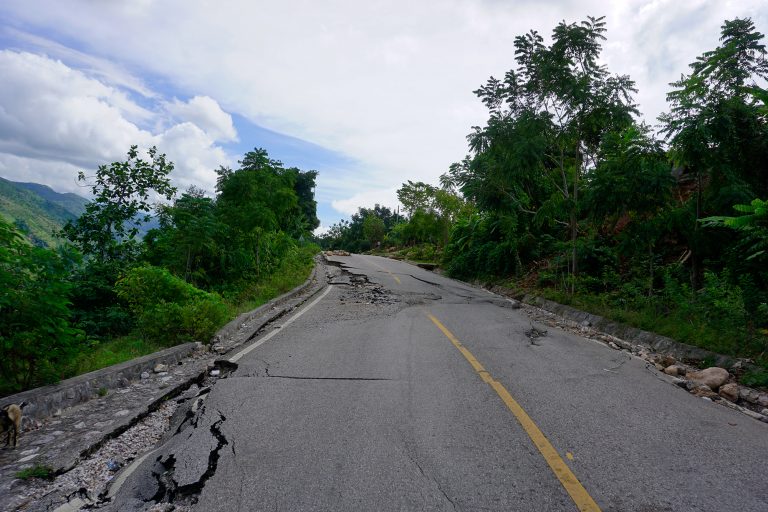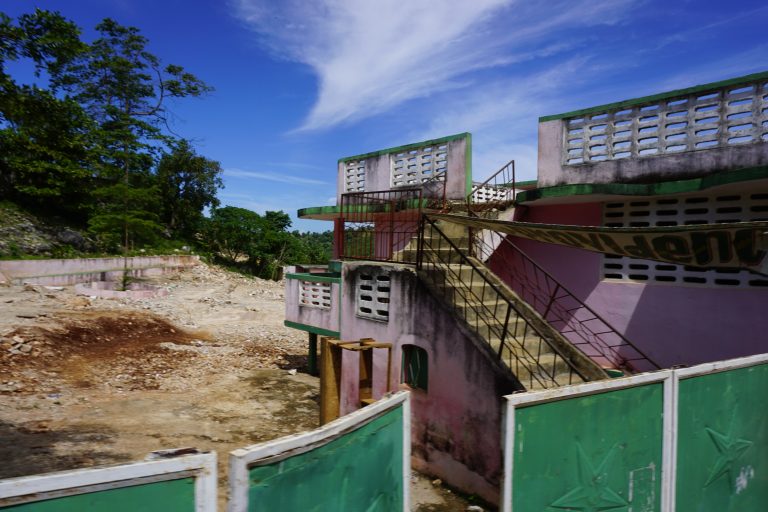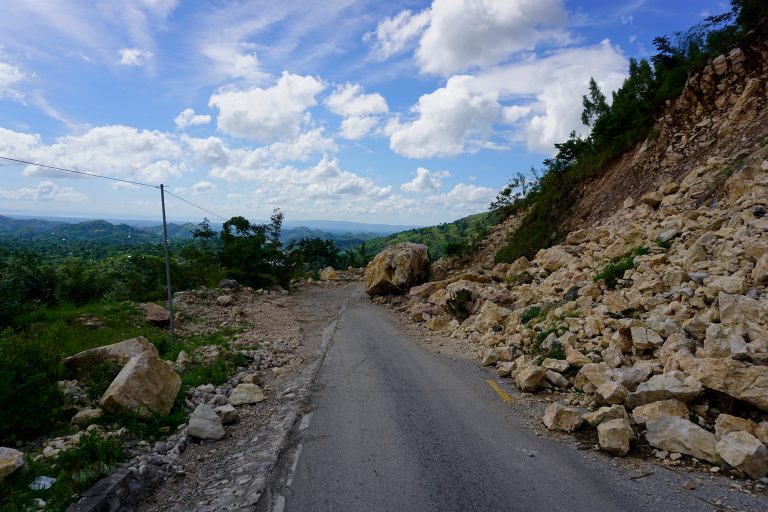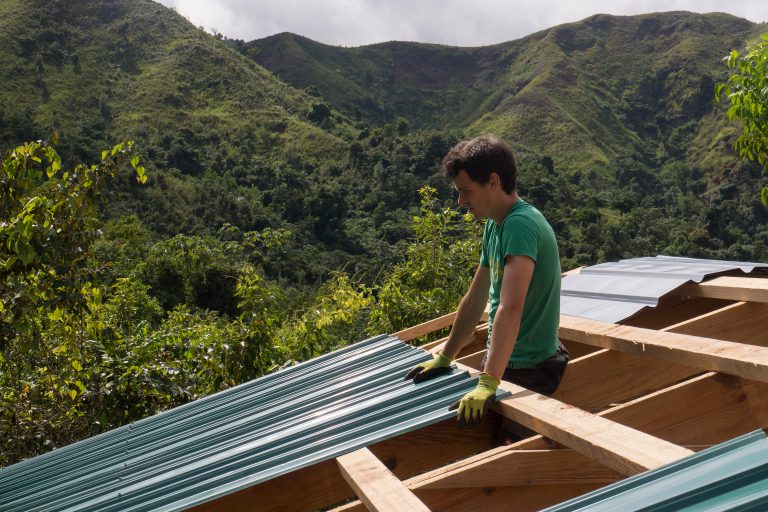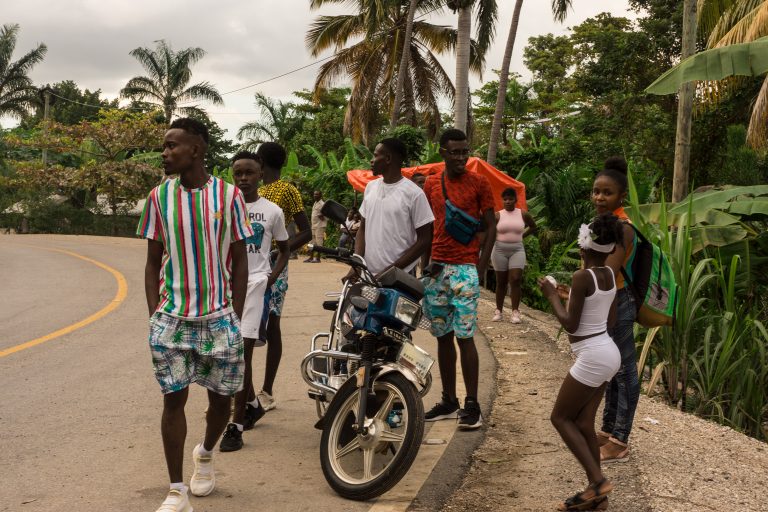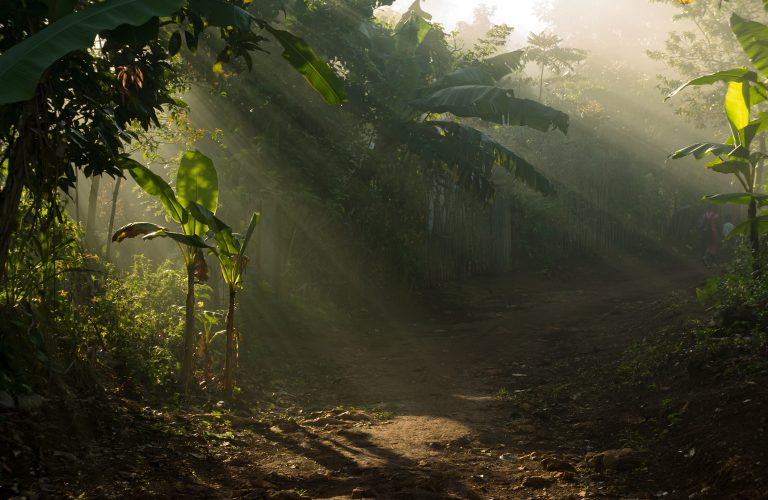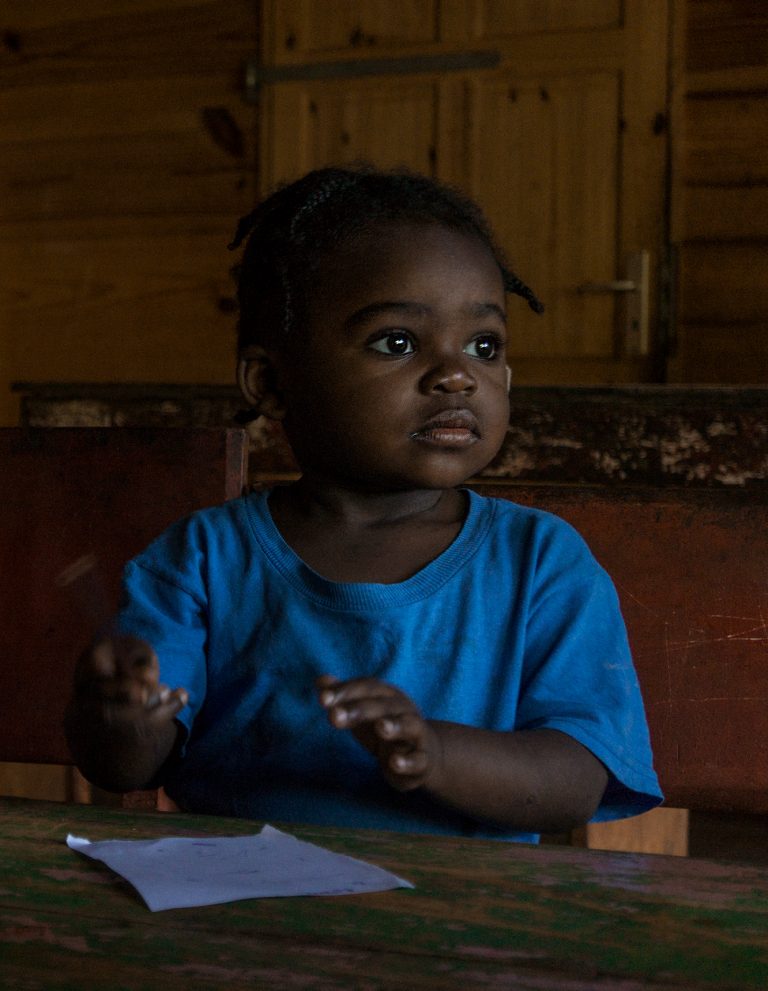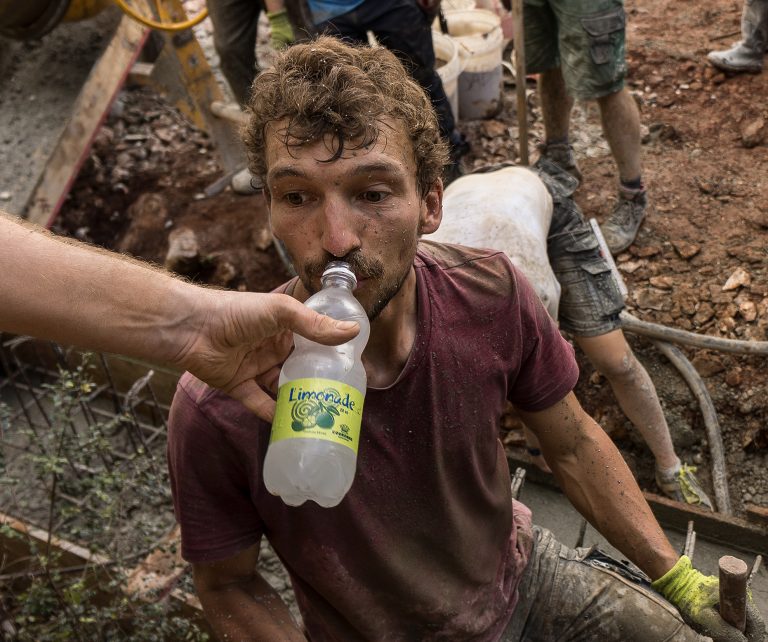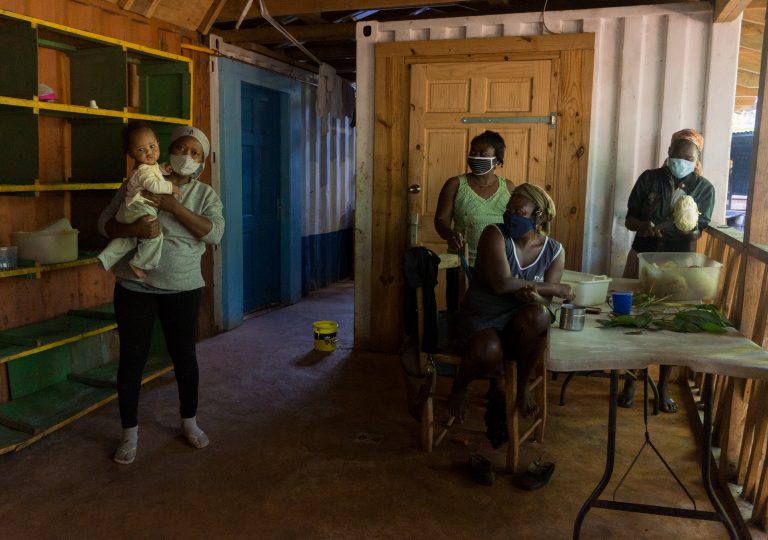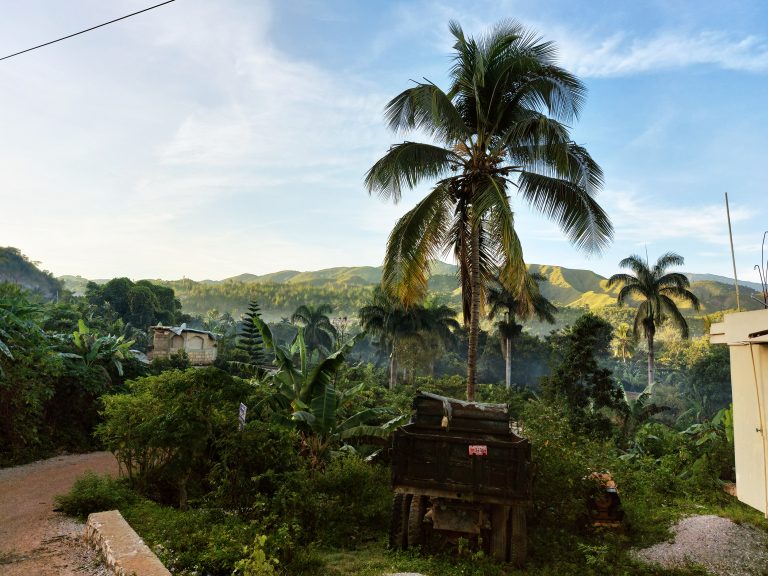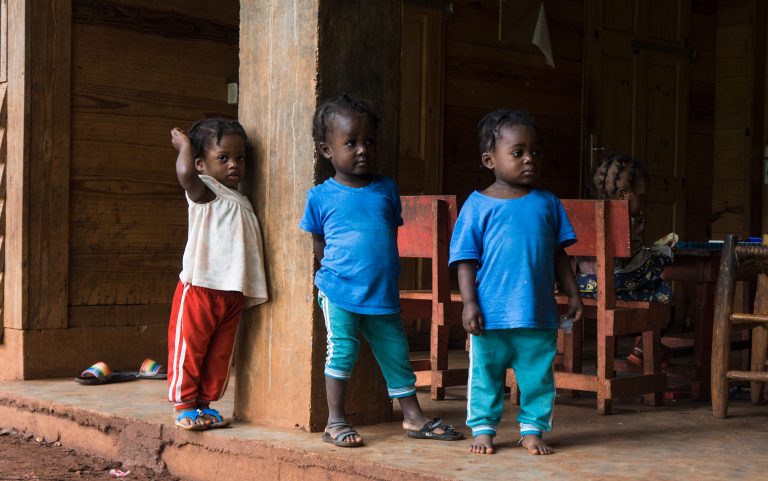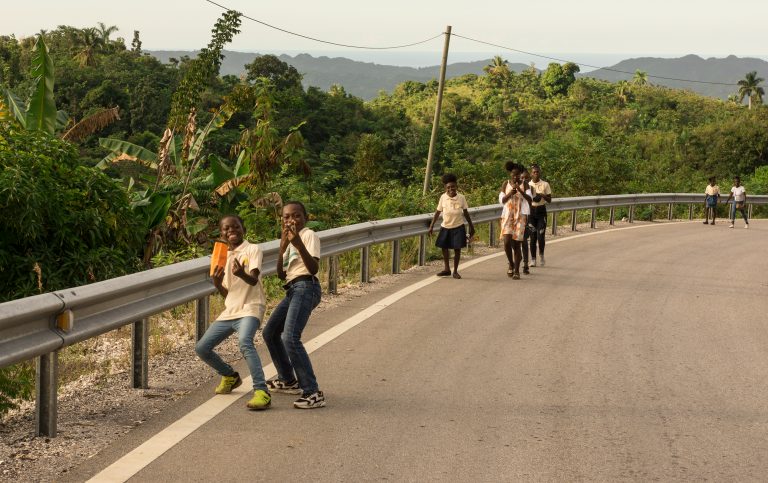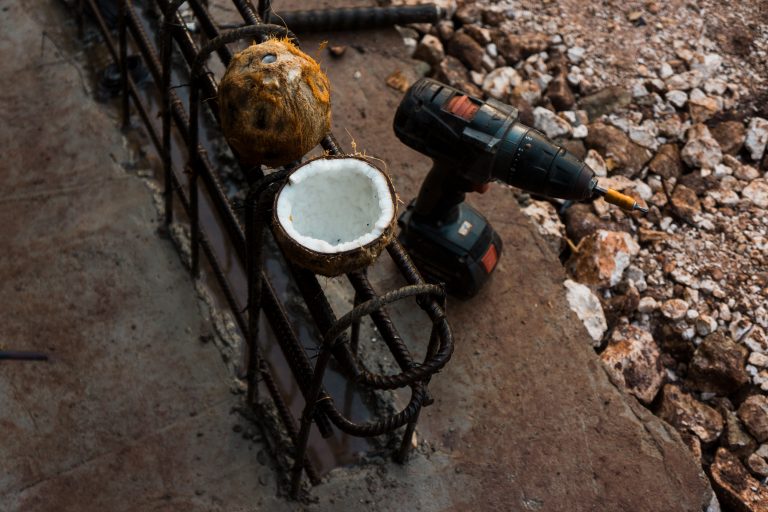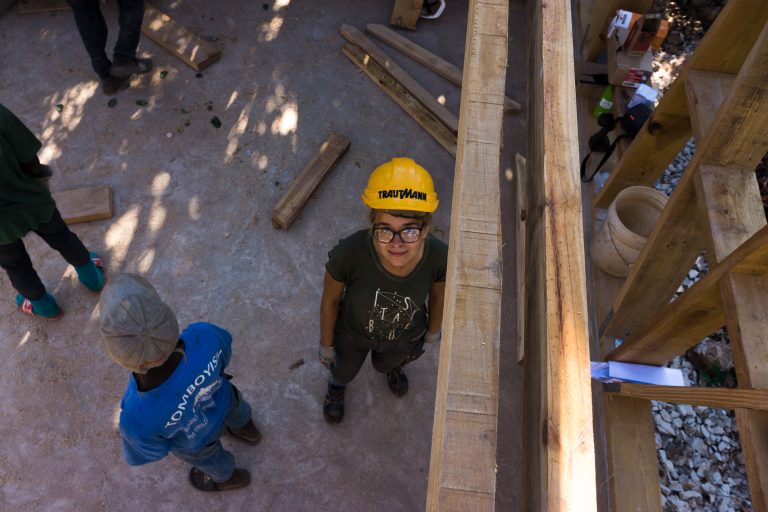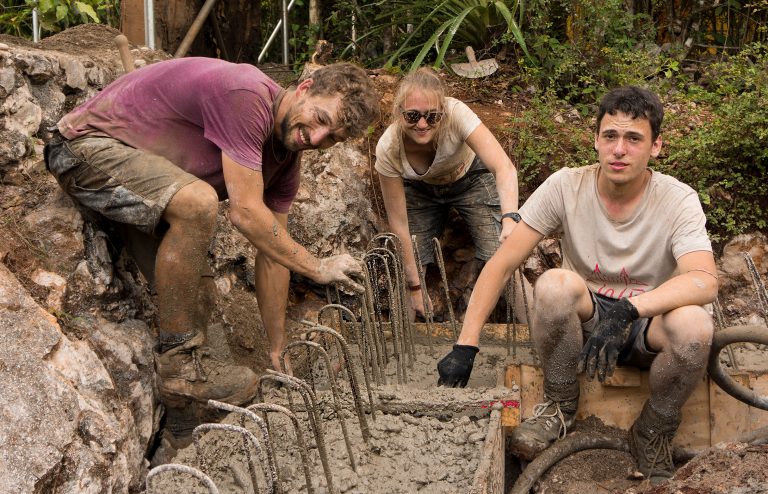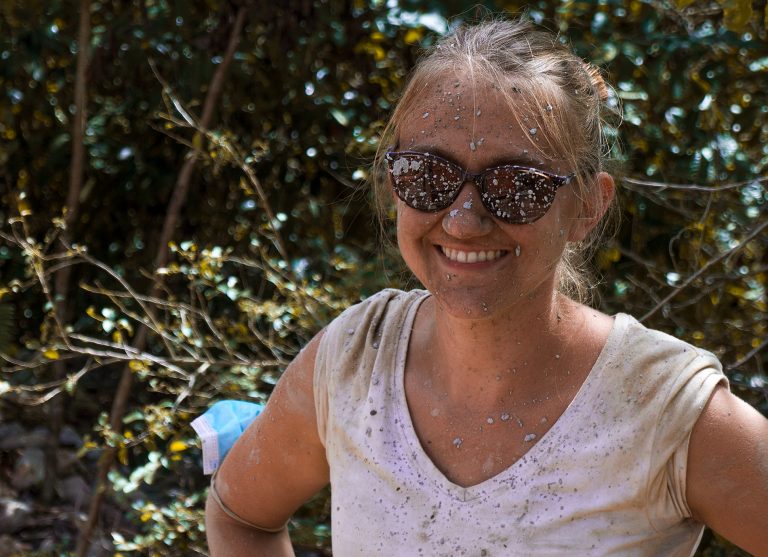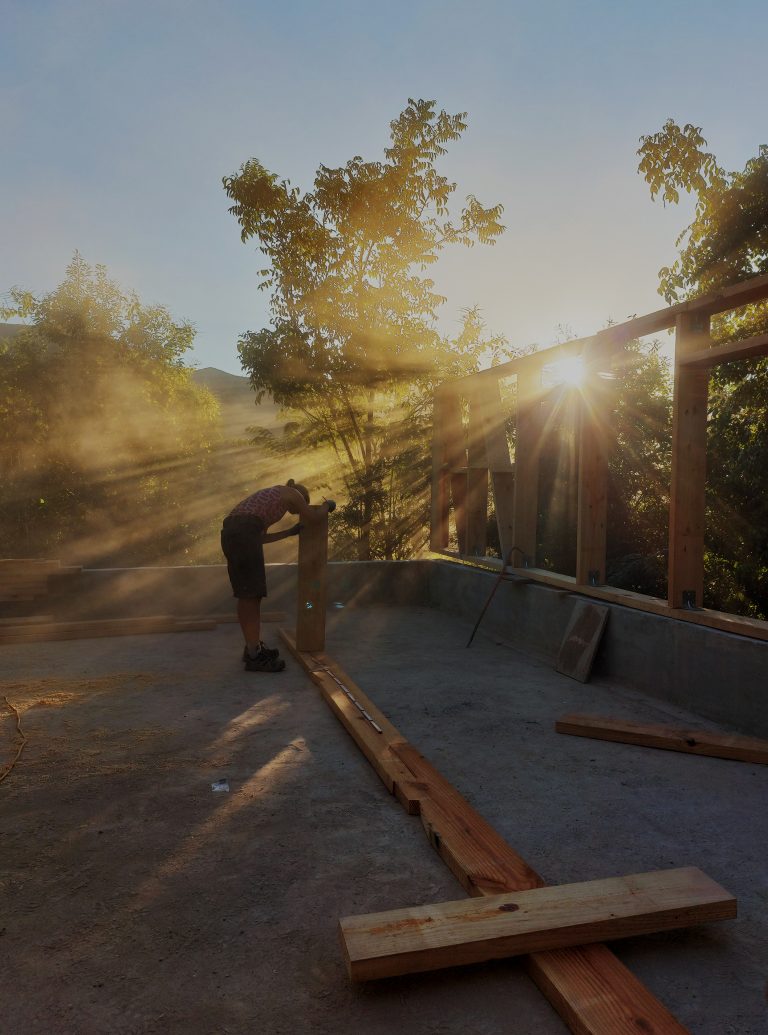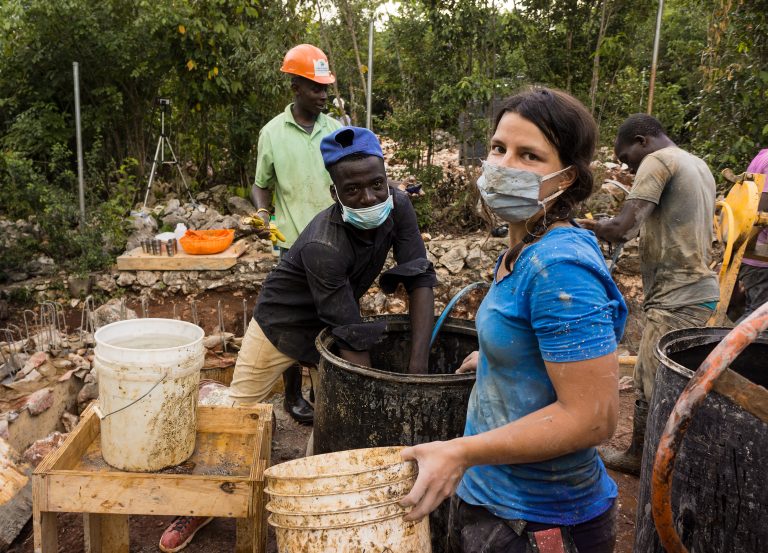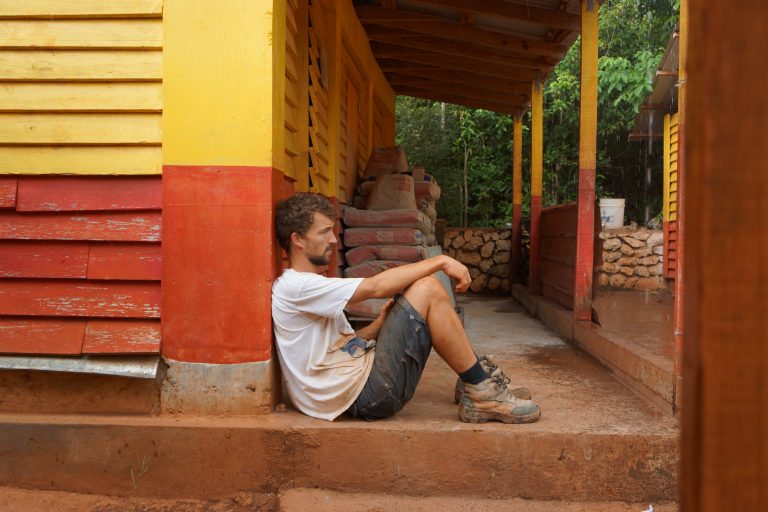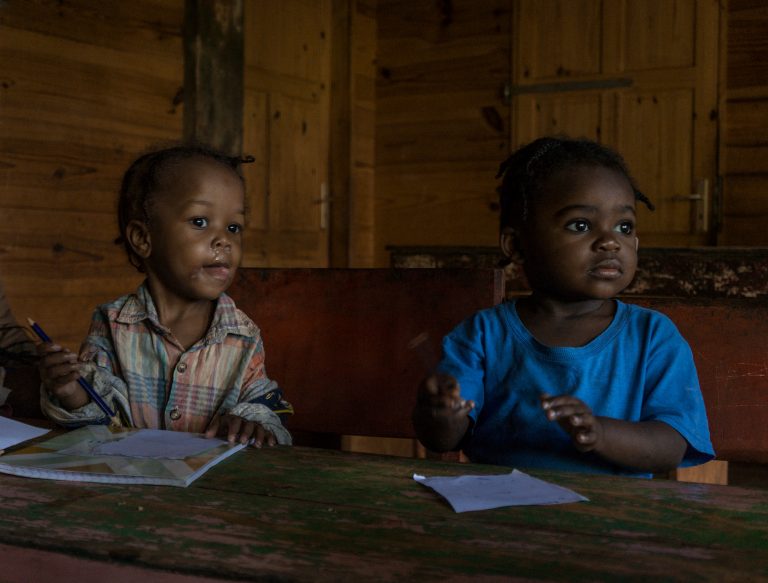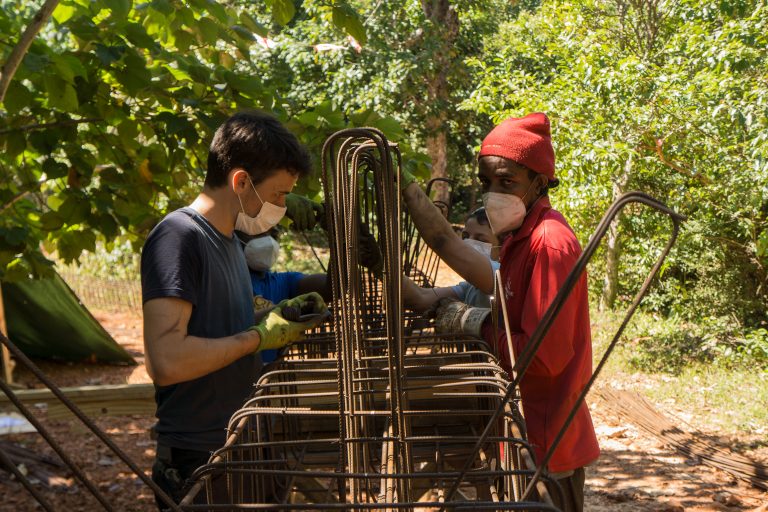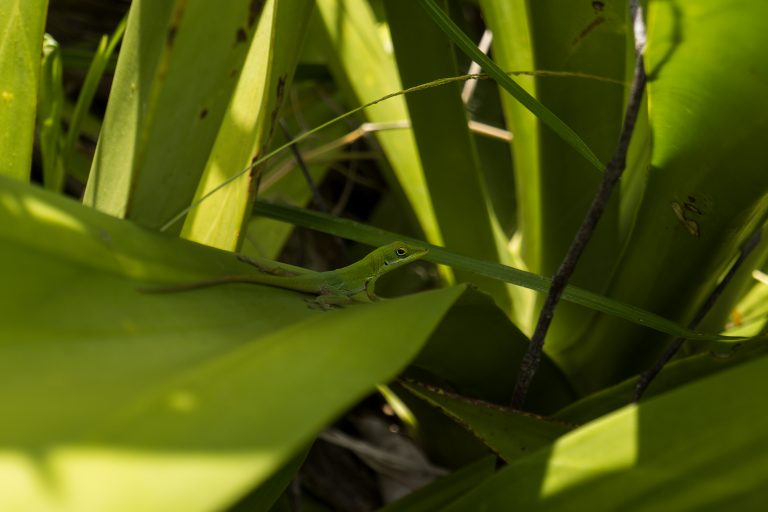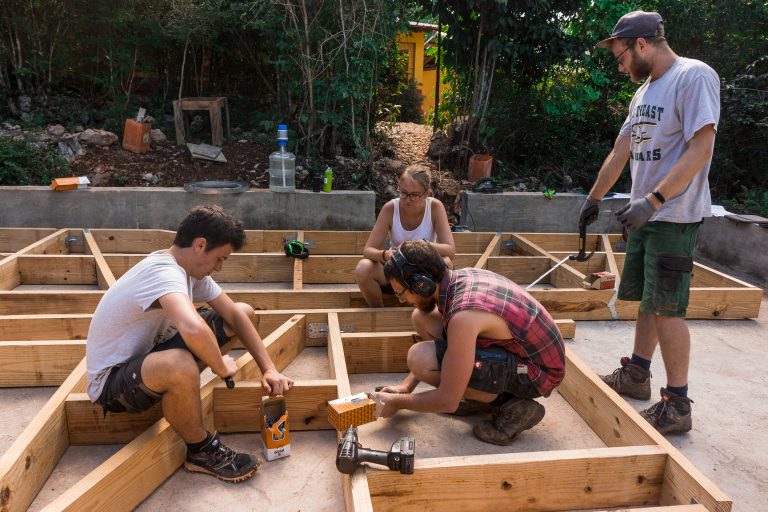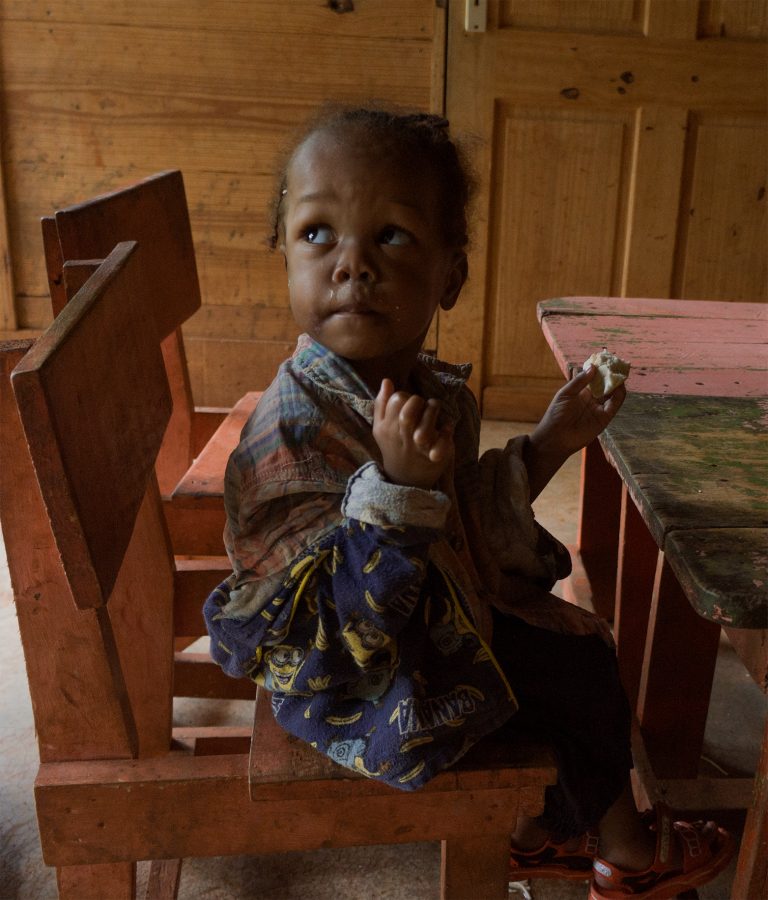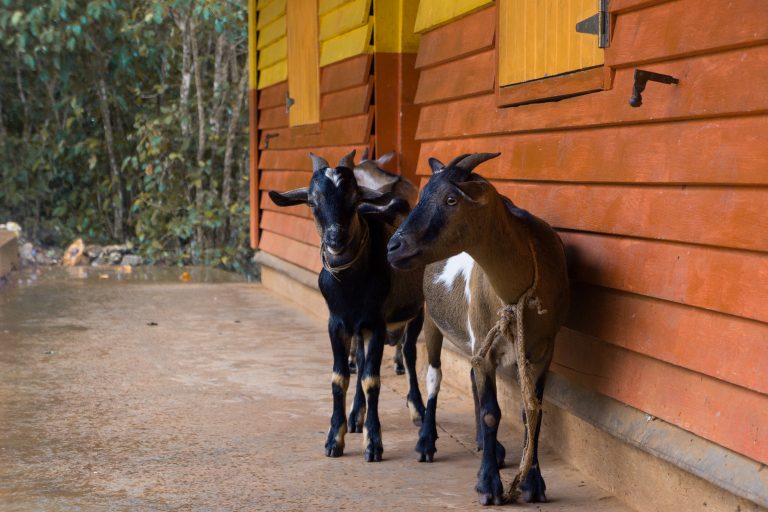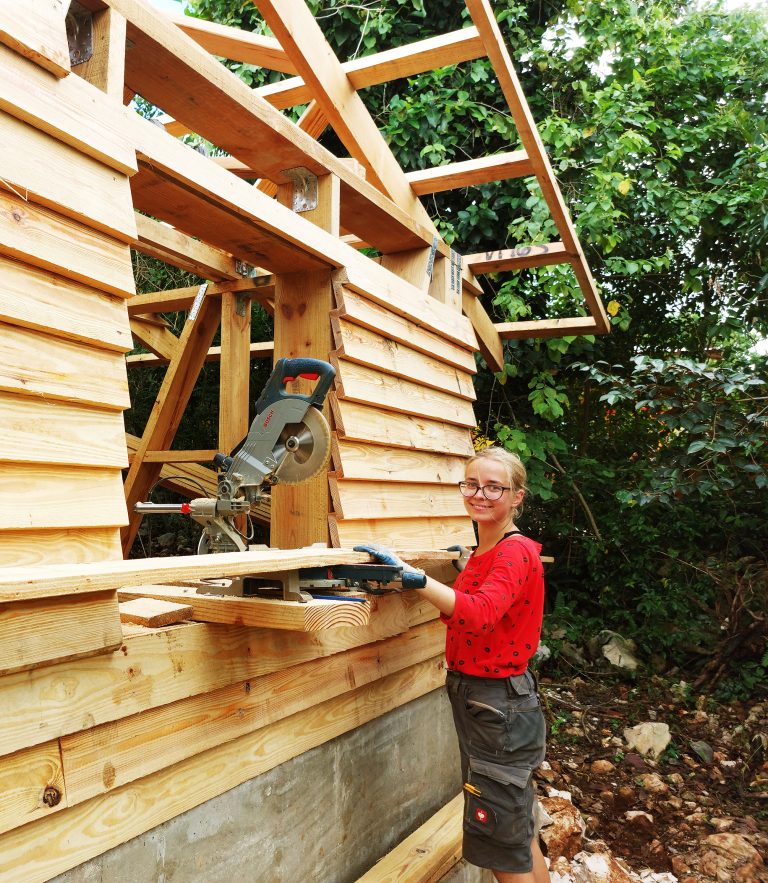Around four years ago, I joined the university group “Engineers Without Borders – Karlsruhe Institute of Technology e.V.“. It is a non-profit organisation that carries out development cooperation in a wide range of areas worldwide. I became interested in the Beaumont – Haiti project because I wanted to help people suffering from natural disasters and political instability in one of the poorest countries in the world. We are relocating a school and an orphanage in a small mountain village called Beaumont. Due to the devastation caused by Hurricane Matthew and at the same time the construction of a new national road, directly in front of the old site, a new home for the pupils and orphans had to be built. With this decision, our Haitian-German partner organisation Pwojè Men Kontre turned to us about seven years ago. And so one thing led to another.
We create the basis for the reliable operation of the orphanage and the school by constructing safe buildings. We design, plan and realise the entire new site, using the skills we have acquired in our studies in a practical and sustainable way. With the resulting earthquake- and storm-proof buildings as well as the planned infrastructure, we are creating a home for orphans and a place for school children to learn.
We want to give children in Haiti perspectives that we all take for granted. But in Haiti, this does not only mean providing access to sufficient drinking water, the light at night and education as a foundation. Above all, it also means designing every building to be earthquake and hurricane-resistant. A principle for us to make sustainability possible in this country in the first place. This gives the next generation chances to receive a proper education. In the end, they will not only shape their own future but will also be able to actively develop the entire country.
From Germany, we plan, calculate and discuss multiple possibilities for designing buildings that are later realised by us in cooperation with the Haitians on site. Since the project came into being in 2014, a lot has been achieved – several classrooms, an orphanage, a canteen, a multifunctional assembly hall with a solar system, as well as a self-sufficient sewage system have been built.
I joined Engineers Without Borders in 2017 and have since designed buildings, water and sewage systems and drawn them in CAD while other association members have implemented them in Haiti. Recently, I also had the opportunity to participate in Construction Phase 9 and finally go to Haiti myself for six weeks. Our team, together with the Haitian workers, built a new classroom and started another one. I would like to share this progress with all of you because it means a lot to me!
Construction phase 9 was the first construction phase since 2019. At first, due to Covid-19, all travel plans worldwide were cancelled and we had to stop construction on site. But other political accidents and a 7.3 magnitude earthquake also shook Haiti recently, which kept delaying the ninth construction phase. Neither the team nor the board of the association could know for sure when and if it could take place at all. But all the circumstances were taken note of and the team studied the situation in the country in detail. Appropriate additional security measures were taken and finally, the travel team could set off!
Photo: EWB, David Clement
After our arrival, it was with a heavy heart that we noticed the traces of the earthquake that had hit the country in August: many houses are badly damaged or completely destroyed, broken infrastructure, such as buried roads, complicate land routes, building materials are missing or difficult to supply. Fortunately, all buildings constructed by EWB have remained intact except for minimal, statically irrelevant damage. The site visit of the orphanage and the school gave us goosebumps, as we realised more than before that our work to construct high-quality earthquake-resistant buildings is not in vain.

In the 9th construction phase, we set out to build two more classrooms. This was an ambitious goal, especially considering that most of us had never been to Haiti before and had hardly any construction site experience. But we were confident, motivated and excited to finally continue this important work.
In the first two weeks, we quickly learned how to use a wide variety of tools properly: Saws, drills, demolition hammers and vibratory plates were used daily on the construction site. We learned and mastered important techniques of timber construction. In the same way, our processes, such as the tying of the reinforcement cages, became faster and more precise. But as on any construction site, we were constantly confronted with challenges. Due to the lack of fuel, our first concreting session was briefly on the brink of failure – without fuel for the vibratory plate and concrete mixer, the trenches for the foundation could neither be levelled nor the foundation concreted. But help came just in time from Hugo, our partner and building material supplier, who got us 3 gallons of petrol.

Left: Vibratory plate in action
Right: Reinforcement cages are ready
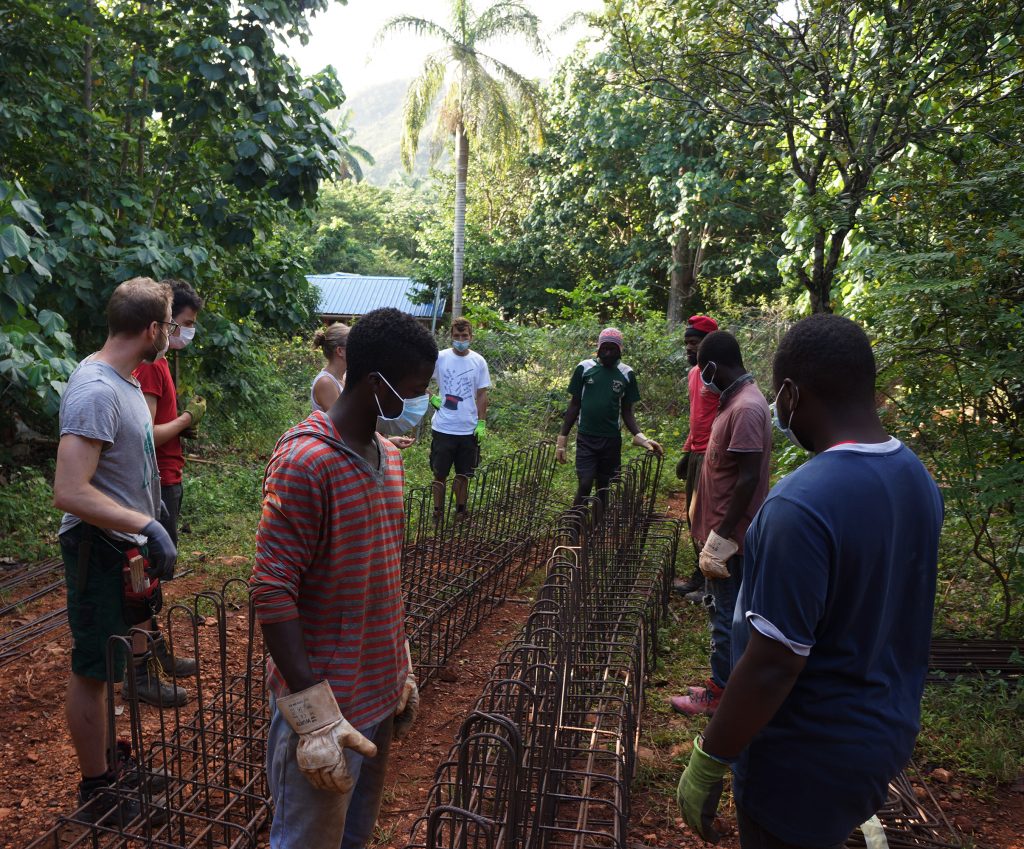
We started the first big concreting session with a lot of joy and of course a healthy portion of excitement before the exhausting day. In the blazing sun, we first started with three concrete mixers at the same time: 4 buckets of gravel, 2 buckets of sand, 1 bag of cement, water in – concrete out, continuously without interruption. But as it had to happen, not everything went according to plan: one hour after the start of the concreting, the first concrete mixer stops working due to a broken joint. Half an hour later, the V-belt of the second concrete mixer breaks and at about the same time the workers start to strike. But after negotiations with the workers and a few phone calls to get a V-belt at short notice, the concreting could still be completed well thanks to combined efforts.
The further concreting of the plinth, the floor slab and the second foundation went smoothly with our practised team and good preparation.
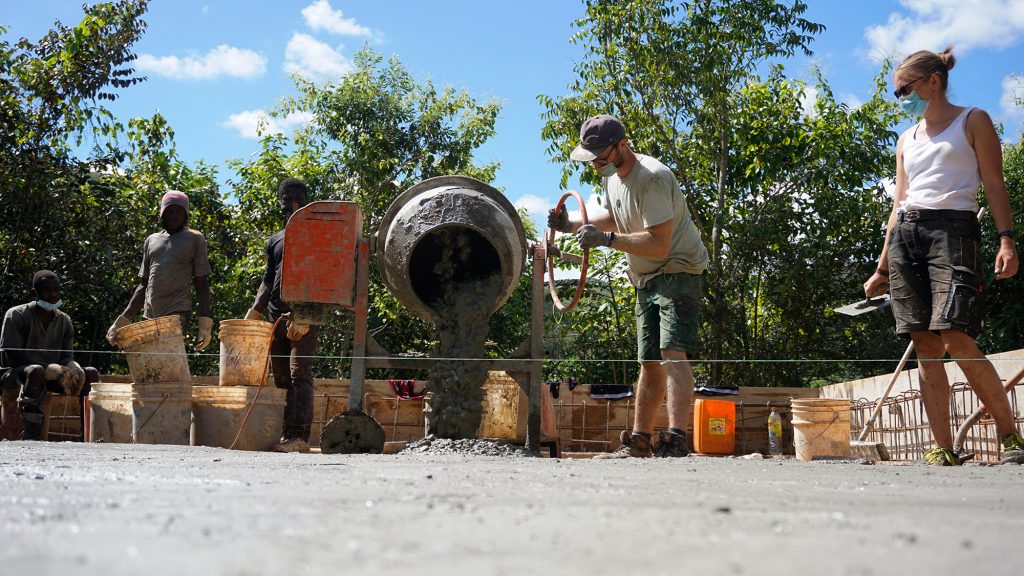

On our days off, we enjoyed the beautiful landscape and the warm hospitality of the Haitians and were able to recover from the strenuous work. Of course, the programme also included visiting the destinations of the surrounding area: be it the dark caves in the valley or the mountains to enjoy the breathtaking views. With luck and good weather, you can even see the Caribbean Sea in the distance from there. Haiti’s nature is extraordinary and fascinating to the European eye. Palm trees and lianas, flowers of different sizes and shapes, as well as large colourful butterflies, giant spiders, tropical frogs, snakes, hummingbirds and multi-coloured lizards will remain in our memories for a long time.

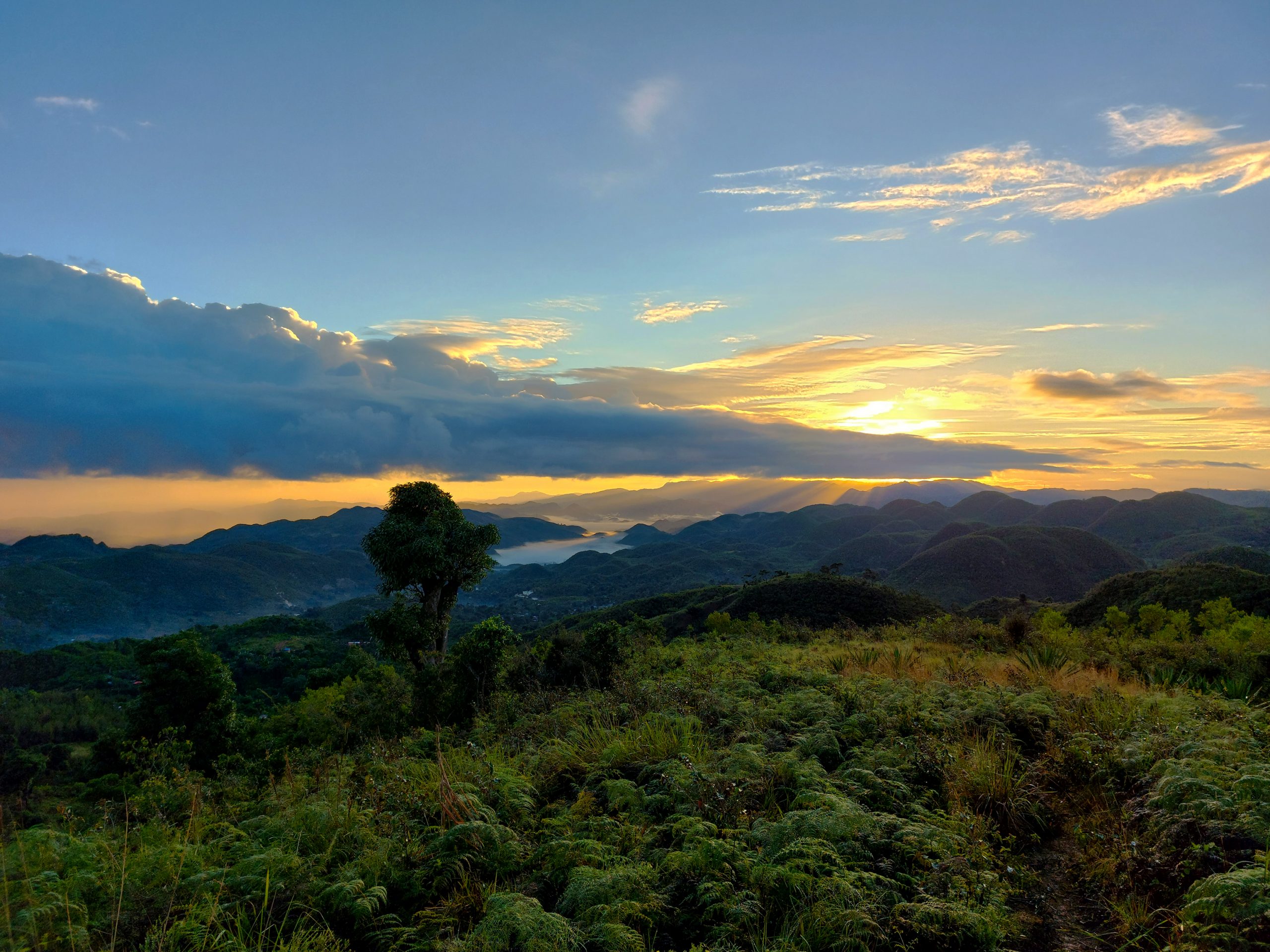
Over time, the language barrier and different cultural backgrounds were no longer an obstacle to having a beer with Valleur (director of the orphanage) in the evening or playing board games and learning new dance moves with the girls at Nan Ginen orphanage. We also built a good relationship with the workers who accompanied us on our trips. From time to time they brought us boxes, full of passion fruit, guavas, coconuts and oranges, which was just what we needed after the exhausting days on the construction site.
The last week on the construction site was very productive, but not easy. Unlike previous construction phases, some of which were months long and involved several teams taking turns and continuing each other’s work, this construction phase consisted of only one team that had to build the classroom from start to finish. We were aware that there is still a lot to do to finish the building before we had to leave. The classrooms are very much needed here right now. The number of pupils is increasing, so at the moment classes are even being held in the dining area of the canteen. Also, two classes are always studying in the auditorium at the same time, which is not an optimal solution because of the noise pendulum. That’s why we started the final week full of energy.
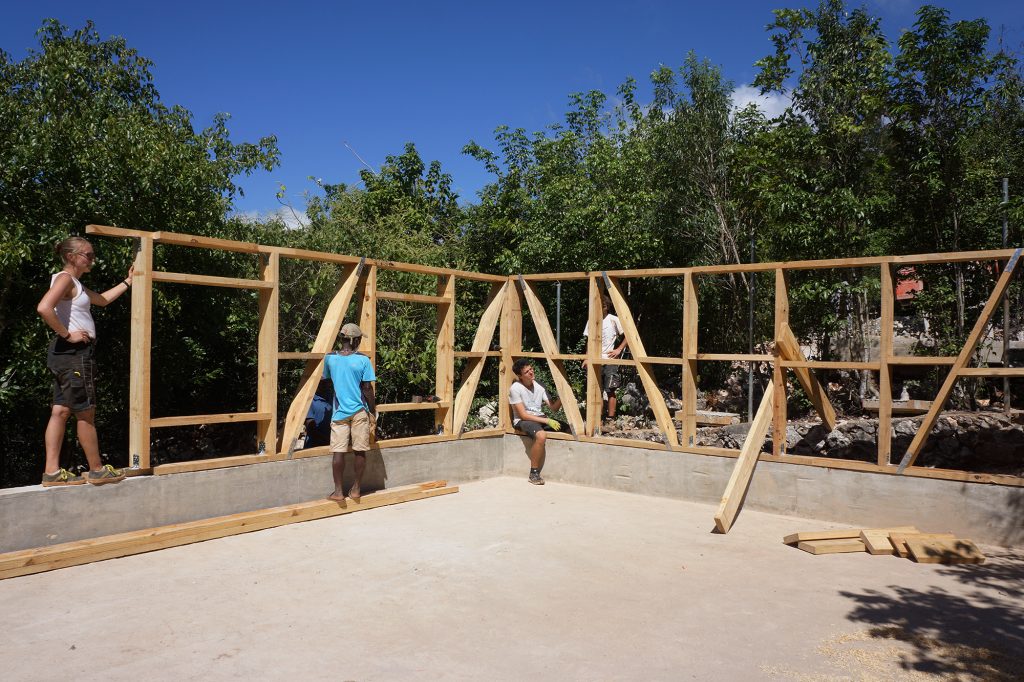
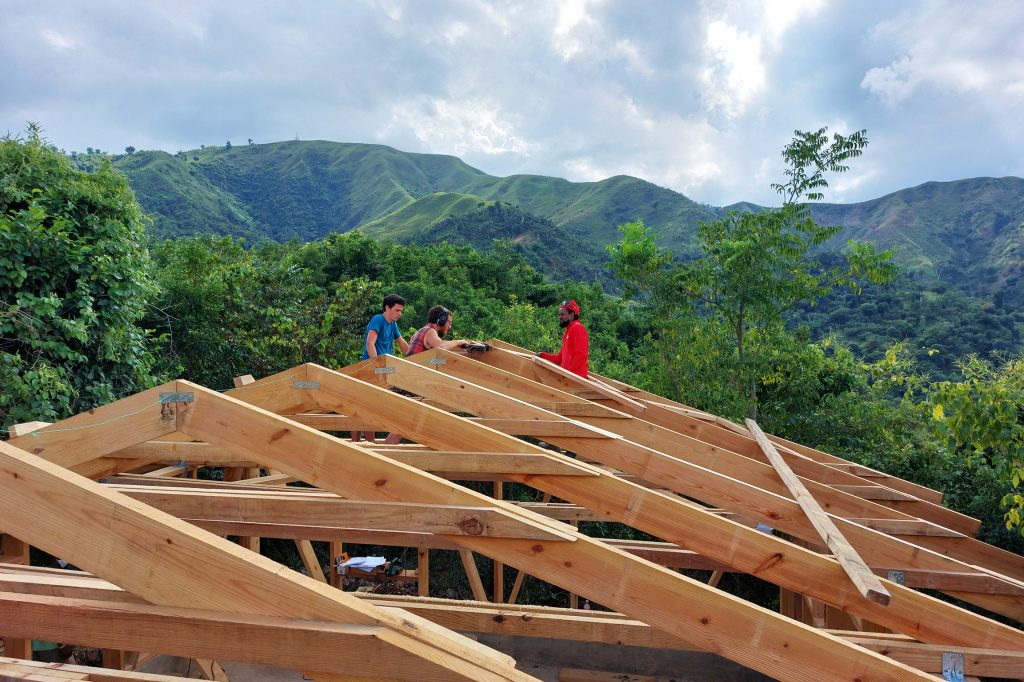
After the classroom walls were braced together, they had to be covered with wooden slats. From the outside, the load-bearing components are not visible, but from the inside, the truss is open and will soon be used as shelves by the teachers and schoolchildren. The roof trusses were almost entirely completed by our Haitian helpers Stanley and Jean Vanex and erected on the roof. These had to be braced, which is essential for the load-bearing capacity of the roof truss. Meanwhile, Stanley and Vanex are good at working with wood, which is rare for Haitian workers. We have done some training with them on how to use different saws and other tools used in woodworking and have gone through all the roof truss plans together in detail. Our Haitian friends did the new tasks with a lot of interest and motivation – slowly and unsteadily at first, but with time more and more quickly and accurately until all the roof trusses were in place and fastened.
Here in sunny Haiti, German traditions have not been forgotten either: after the completion of the wooden construction, we celebrated a small topping-out ceremony with some good Haitian rum. It was breathtaking to watch the first sunset from the freshly built roof because the view from up there is just insane!

Now the battens and the sheet metal had to be attached to the roof. But again, things did not go according to plan: there were heavy thunderstorms and showers for two days.

Working on the slippery sheet metal in this weather was dangerous. Longingly, the team waited for the sun – and then it came. Again, there were days of nailing and screwing on the construction site, the house took its final shape. After the shutters and the door are mounted and the screed is poured, the building can be used.
Even during the rain, we had no time to be lazy. Some repairs in the showers of the girls’ dormitory were done, the tool container was tidied up and the available material for the next teams was carefully counted. Additional training on the maintenance of the PAUL water filter, as well as on the maintenance of the batteries of the photovoltaic system were conducted with the caretakers of the school to ensure the longevity of the electricity and freshwater supply.
The bricks for the second classroom were prepared. The construction management of the building of this classroom will be taken over by our local friends, Stanley and Jean Vanex, after our departure.
Shortly before our departure, we were invited by Valleur to church and then to dinner, where we could experience Haitian Catholic traditions. While in Europe during Catholic masses it is being melancholically preached about our sins, here the atmosphere is much more cheerful, with singing that can easily be mistaken for relaxing beach music if you don’t understand the lyrics. After mass, we had the opportunity to meet Bishop Joseph Gontran Decoste. He told us a lot about his trips to Germany, about how the beauty of the Cologne Cathedral impressed him and about the cooperation with German Catholic associations that have been supporting Haiti for 60 years. He was very interested in our work and even invited us to visit Les Cayes. The exchange with this nice and grounded man was very interesting and inspiring – we are envious of the next travel teams that will be able to take up his offer.
It was with heavy hearts and not without tears that we said goodbye to the orphans. During the time we lived in the Nan Ginen orphanage, we got very used to them. Even though we could only communicate with gestures, it was so much fun to play and dance together in the evenings, to listen to them sing. Dancing and smiling are international languages, yet we regretted several times that we didn’t learn Creole better before the trip so that we could have deeper conversations.
Suddenly the day of departure arrived – six weeks have flown by. Our suitcases are full of Bernardette’s (our cook) homemade jam and our hearts are filled with pride for what we have achieved and with the most beautiful sunny memories that will warm us all winter in cold rainy Germany.
Photogallery
